CWDM wavelength division multiplexer wikipedia
Time: 2020-03-29WDM includes CWDM (Coarse Wavelength Division Multiplexing) Coarse Wavelength Division Multiplexer and DWDM (Dense Wavelength Division Multiplexing) Dense Wavelength Division Multiplexing, both of which are passive wavelength division multiplexers that do not require power supply for operation. WDM with WDM module can form a low-cost transmission scheme for MAN access layer, which can fully utilize the bandwidth capacity of a single optical fiber, thus reducing the cost of optical fiber utilization.
1. Working principle of WDM
Simply put, WDM is a variety of different wavelengths of the signal (carrying the information to be transmitted) at the sending end by the multiplexer (also known as a combined waveform, Multiplexer) together, and coupled to the optical line in the same optical fiber for transmission; at the receiving end, by the de-multiplexer (also known as a splitter, Demultiplexer) will be a variety of wavelengths of the optical carrier separated from the optical module for further processing to restore the original signal, then the optical module for further processing to restore the original signal, the optical module for further processing to restore the original signal. At the receiving end, various wavelengths of optical carriers are separated by a demultiplexer (also known as a demultiplexer), and then further processed by an optical module to recover the original signal. Whether it is CWDM or DWDM, is the principle, but the CWDM wavelength interval between the larger, 20nm, while the DWDM interval is very small, 0.8nm or 0.4nm.
The so-called multiplexing, that is, different wavelengths of optical signals in the transmission, common multiplexing of the same fiber, the advantage of doing so is that it can save the transmission of optical fiber. We know that the cost of optical fiber itself is not high, but the cost of laying and constructing optical fiber is very high, therefore, saving the number of optical fiber channels for transmission can greatly save costs.
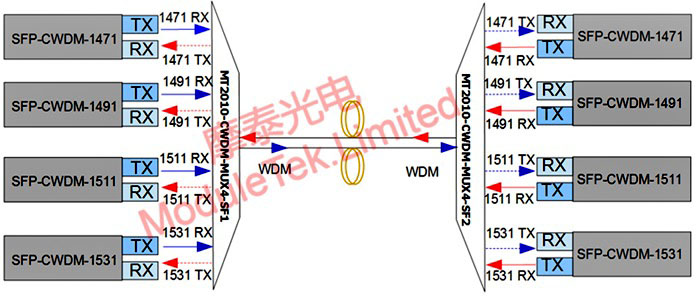
Figure 1 Dual fiber bidirectional WDM
2. WDM Appearance
There are two common WDM form factors, a small LGX chassis and a 19-inch 1U rackmount chassis, as shown in the following figure:
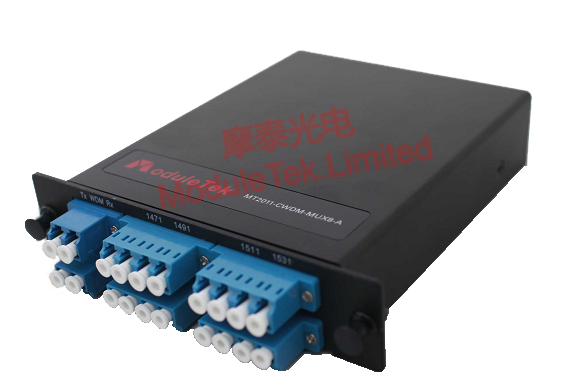
Figure 2 LGX chassis

Figure 3 19-inch 1U chassis
Kinds of chassis with different dimensions, which also determines the number of channels they can accommodate different, generally 8 channels below the WDM, both chassis can be, more than 8 channels, you can only choose 1U chassis.
3. WDM internal structure
After removing the frame outside the WDM, there is usually an ABS plastic box similar to the one shown below, from which there are several optical fibers and connectors.
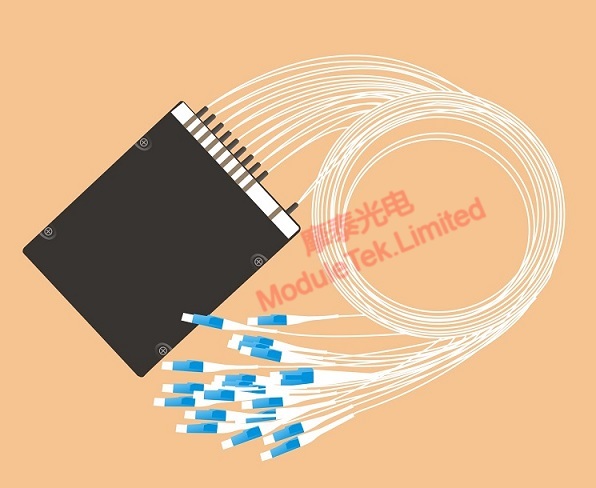
Figure 4 Internal structure of wavelength division multiplexer
When the ABS box is further disassembled, the internal structure, as shown below, contains several glass tubes of different wavelengths, with optical fibers coming out of the ends of each glass tube. These glass tubes are the core devices of WDM, and different wavelengths are converged and separated by these glass tubes.
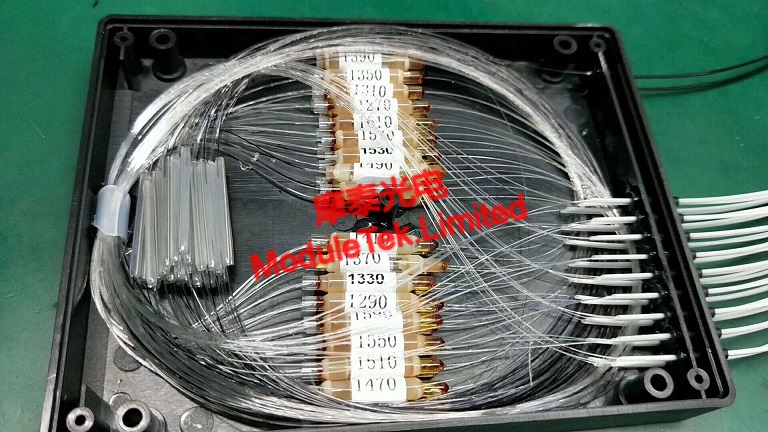
Figure 5 Internal Structure of ABS Box
4. Difference between CWDM and DWDM
The working principle and structure of CWDM and DWDM are similar, but there are some differences.
For CWDM WDM, the wavelength ranges from 1270nm to 1610nm with a 20nm interval, so the maximum number of channels is 18; for a typical DWDM WDM, the maximum number of channels is 40.
The coating process of the core component of DWDM, the filter, is much more complex and difficult to process than that of CWDM, so from the cost point of view, DWDM is more expensive than CWDM.
5. Special ports of WDM
In addition to the conventional transmission service ports, WDM can also be equipped with three kinds of special ports, namely, pass-through port, monitor port and 1310 port.
Pass-through ports, also called Express Port, can be used to further expand the service. For example, if only 4 channels of service capacity are needed at present, but the demand is expected to increase in the future, at this time, when selecting WDM, a pass-through port can be added, so that when expanding the service in the future, the existing system does not need to be replaced or disassembled, and the new WDM can be directly connected to the pass-through port. As shown in the unidirectional example below, the original WDM is 1471/1491/1511/1531 with pass-through ports, and when expanding the service, add 1551/1571/1591/1611 WDM to access the pass-through ports, and then realize the new 4-channel service.

Figure 6 Pass-through ports
Monitor Port can be used to monitor the optical power of the public service port, as shown in the figure below, the optical power ratio of the monitor port and the main line service port on both sides is 1:99. When the light of the monitor port becomes significantly smaller, it means that the main line is faulty, and it is necessary to take countermeasures in time.
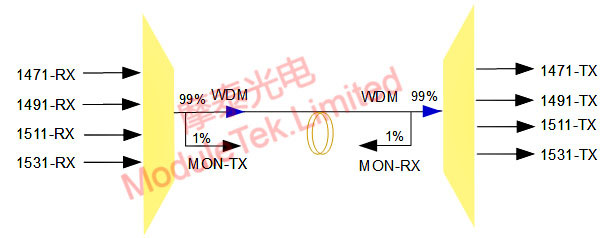
Figure 7 Monitor Port
The 1310 port, also known as the Grey Port, is different from the 1311nm port used for service transmission. The bandwidth of the Grey Port is ±40nm, while the bandwidth of the 1311nm port used for service transmission is ±6.5nm. The Grey Port can be used for the transmission of signals of the conventional 1310nm 1G/10G/40G/100G rate Grey Optical Module.
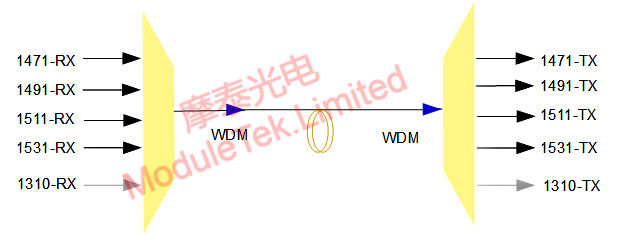
Figure 8 Grey Port
6. Summary
This article briefly introduces the basic concepts of WDM to help customers have a preliminary understanding, to solve the problems in the use of more in-depth understanding of the subsequent will continue to introduce.
Moduletek Limited provides the commodities involved in the above application guide, welcome to buy.
If you have any questions about the above content, you can contact us by Email : web@moduletek.com

 40G/100G Optical Transceivers
40G/100G Optical Transceivers 10G/25G Optical Transceivers
10G/25G Optical Transceivers 155M/622M/2.5G Optical Transceivers
155M/622M/2.5G Optical Transceivers 100M/1G Optical Transceivers
100M/1G Optical Transceivers FC 16G/32G Optical Transceivers
FC 16G/32G Optical Transceivers CWDM/DWDM Optical Transceivers
CWDM/DWDM Optical Transceivers 100M/1G/10G Coppers
100M/1G/10G Coppers Active Cable AOC
Active Cable AOC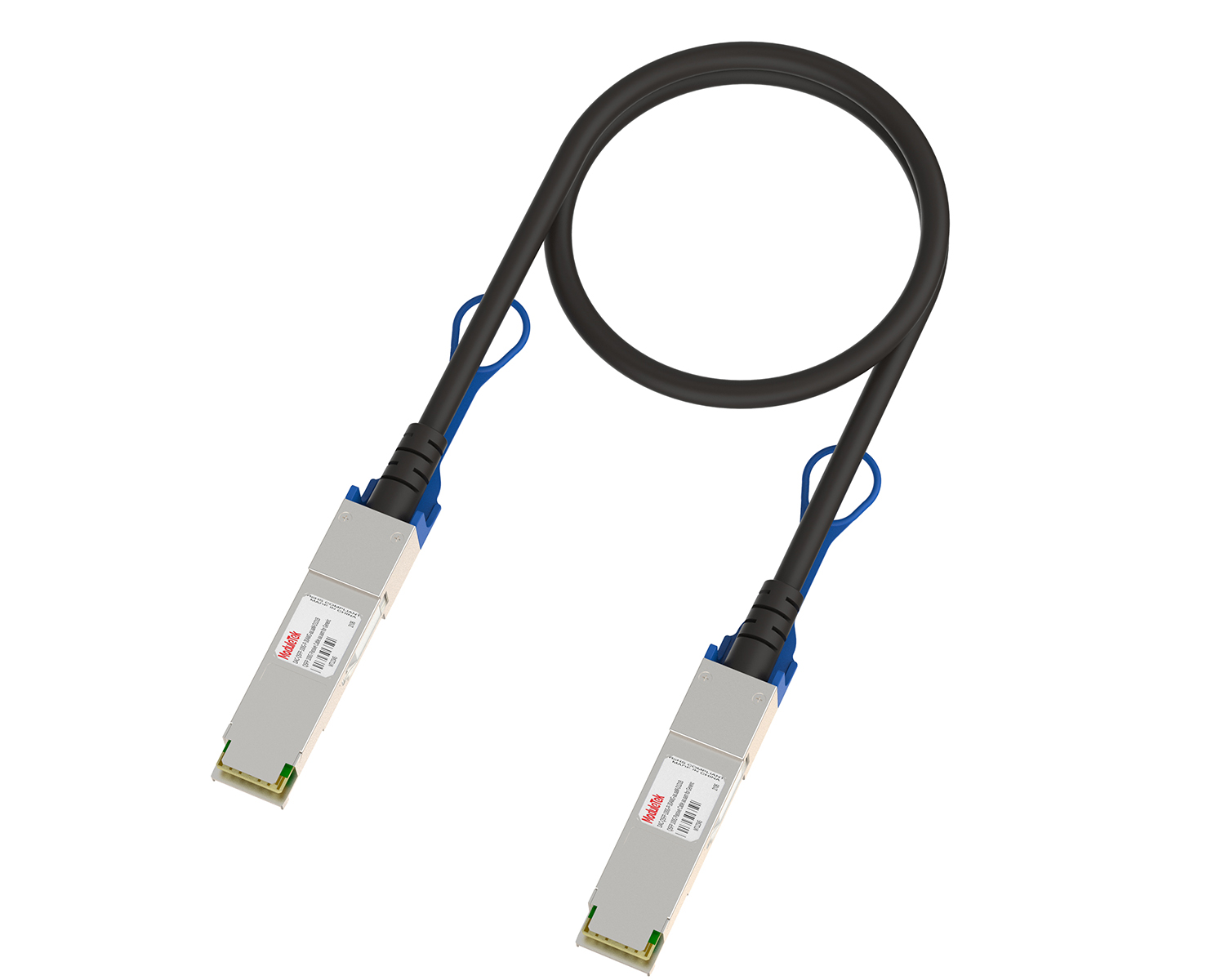 Direct Attach Cable DAC
Direct Attach Cable DAC Regular/MTP-MPO Fiber Patch Cords
Regular/MTP-MPO Fiber Patch Cords MT2011
MT2011 MT2010
MT2010 CodingBox
CodingBox






